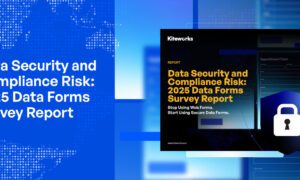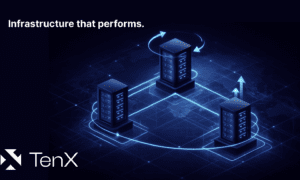Cloud security refers to a set of practices, technologies, and policies designed to protect data, applications, and services hosted in cloud environments. As businesses increasingly shift their workloads to the cloud, understanding what is cloud security becomes critical to ensuring that data stored, processed, and accessed in the cloud is protected from various threats, vulnerabilities, and unauthorized access.
Understanding Cloud Security
Cloud security encompasses a broad range of controls and processes aimed at safeguarding cloud-based systems, ensuring data privacy, and protecting information from cyber threats. These measures involve everything from identity management and encryption to network security protocols and real-time monitoring of cloud environments.
Why Cloud Security is Important
The cloud offers unmatched scalability, flexibility, and cost efficiency, making it attractive for businesses of all sizes. However, the cloud also presents unique challenges. Data stored in the cloud is not physically under the company’s control, so businesses must rely on the cloud provider’s security practices as well as implement their own measures. Any data breach, misconfiguration, or failure to implement robust security controls can lead to significant consequences, including data loss, financial damage, and reputational harm.
Key Components of Cloud Security
Cloud security involves several key components that work together to ensure the protection of cloud environments. Each component plays a vital role in addressing different aspects of security within the cloud.
Data Protection and Encryption
Data protection is the foundation of cloud security. Encryption is one of the most critical techniques used to protect data stored in the cloud. It ensures that even if unauthorized access occurs, the data remains unreadable and secure. Both at-rest and in-transit data encryption are essential to prevent data theft and breaches. In addition to encryption, implementing strong data protection policies ensures that sensitive information remains secure and compliant with regulatory requirements, such as GDPR or HIPAA.
Identity and Access Management (IAM)
Identity and Access Management (IAM) is crucial in controlling who can access what in a cloud environment. Effective IAM policies ensure that users have the appropriate permissions and access levels based on their roles within the organization. Multi-factor authentication (MFA), least privilege principles, and proper user provisioning/deprovisioning are all part of a comprehensive IAM strategy. Without IAM, cloud environments are vulnerable to unauthorized access and misuse, leading to compromised data or systems.
Network Security
Network security involves the measures taken to protect the cloud infrastructure’s underlying networks. Firewalls, Virtual Private Networks (VPNs), Intrusion Detection Systems (IDS), and Intrusion Prevention Systems (IPS) help ensure that malicious traffic or unauthorized connections are blocked before they can cause harm. Secure configurations of cloud networks also play a key role in ensuring that unauthorized users cannot gain access to sensitive systems or data. This includes setting up Virtual Private Clouds (VPCs), configuring security groups, and applying network segmentation to reduce the attack surface.
Security Monitoring and Threat Detection
Monitoring and detecting threats in real-time are critical aspects of cloud security. With constant traffic and data being processed in the cloud, organizations need visibility into any abnormal activity or potential threats. Cloud providers typically offer built-in monitoring tools that enable businesses to track network traffic, login attempts, and file changes, allowing them to identify security incidents early. Security Information and Event Management (SIEM) systems and advanced threat detection solutions that utilize artificial intelligence (AI) and machine learning (ML) are also essential for identifying suspicious behavior and stopping attacks before they escalate.
Cloud Security Risks
As organizations transition to the cloud, they must remain aware of the various security risks that come with this shift. These risks can range from data breaches to configuration errors and internal threats. Understanding these risks is the first step toward mitigating them.
Data Breaches
Data breaches occur when sensitive information is exposed to unauthorized parties. In cloud environments, data breaches can happen due to weak encryption, insufficient access controls, or vulnerabilities in the underlying infrastructure. Breaches can result in the loss of customer trust, hefty fines, and compliance violations. High-profile breaches have demonstrated the importance of robust cloud security to protect sensitive data, especially in industries like healthcare and finance.
Insufficient Identity and Access Management
Without strong IAM practices, cloud environments can be at risk of unauthorized access. Mismanagement of user roles and permissions can lead to the exposure of sensitive data or access to critical systems by users who should not have such privileges. Inadequate IAM can also lead to insider threats where employees or contractors misuse their credentials to compromise security.
Misconfigured Cloud Settings
Misconfigurations are among the leading causes of cloud security breaches. Default settings or improper configurations in cloud services—such as open storage buckets, insecure API endpoints, or poorly implemented firewall rules—can leave systems exposed to external attacks. The complex nature of cloud environments can sometimes make it easy to overlook these settings, making it critical to regularly audit and secure configurations.
Account Hijacking
Account hijacking is when an attacker gains unauthorized access to cloud services by stealing login credentials. Once inside, they can perform malicious activities like stealing data, deleting resources, or injecting malware. This risk is heightened if proper access controls like MFA or IAM are not in place, allowing attackers to exploit weak credentials.
Insider Threats
Insider threats occur when someone within the organization—an employee, contractor, or vendor—abuses their access to cause harm, either intentionally or accidentally. Insiders may leak data, alter configurations, or introduce vulnerabilities. Mitigating insider threats requires a combination of strong IAM practices, regular auditing, and monitoring of user activity within the cloud environment.
Denial of Service (DoS) Attacks
Denial of Service (DoS) attacks aim to disrupt cloud services by overwhelming servers with traffic, making them unavailable to legitimate users. These attacks can cripple cloud-based applications, leading to significant downtime and lost revenue. Implementing traffic filtering, rate limiting, and using Content Delivery Networks (CDNs) can help mitigate DoS attacks.
Best Practices to Mitigate Cloud Security Risks
Mitigating cloud security risks requires a proactive approach and the implementation of best practices tailored to the specific needs of the cloud environment.
Implement Strong IAM Policies
IAM policies must ensure that access to cloud resources is restricted based on roles and responsibilities. Adopting least privilege access ensures that users only have the permissions they need to do their jobs, minimizing the risk of abuse. Additionally, MFA should be implemented for all users to add an extra layer of protection against unauthorized access.
Regularly Monitor and Audit Cloud Configurations
Cloud environments can quickly become complex, making it easy to overlook misconfigurations. Regular monitoring and auditing of cloud resources, settings, and access controls can help catch potential issues before they become security threats. Automated tools that scan for misconfigurations and vulnerabilities can significantly reduce the likelihood of a breach.
Use Encryption for Data Protection
Data encryption should be applied to both data at rest and in transit. Encryption ensures that even if data is intercepted or accessed by unauthorized users, it remains unreadable and secure. Organizations should also implement key management practices, ensuring that encryption keys are securely stored and managed.
Conduct Continuous Threat Monitoring
Cloud environments require continuous monitoring for potential threats. Using AI-powered tools for anomaly detection, real-time monitoring, and alerting can help organizations identify and mitigate potential security incidents quickly. Additionally, SIEM solutions enable organizations to collect and analyze security data from various sources to detect patterns of suspicious activity.
Benefits of Cloud Security
Investing in robust cloud security offers a wide range of benefits that extend beyond protection from threats. These benefits contribute to overall business efficiency and scalability.
1. Enhanced Scalability and Flexibility
Cloud security solutions are designed to scale with the organization’s needs. As businesses grow, they can easily expand their security measures without significant overhead or investment in new hardware. This scalability allows for flexibility, making it easier for companies to adapt to changing security needs and regulatory requirements.
2. Cost-Effective Security Solutions
Cloud security can be more cost-effective than traditional on-premise security solutions. With cloud providers offering built-in security features and managed services, businesses can offload some of the security responsibilities to the provider, reducing the need for in-house security teams and infrastructure.
3. Streamlined Compliance with Regulations
Cloud providers often offer compliance-ready environments that make it easier for businesses to meet regulatory requirements like GDPR, HIPAA, and SOC 2. By implementing proper security measures and leveraging the compliance capabilities of cloud services, organizations can ensure they meet the necessary legal and industry standards.
Conclusion
In today’s digital landscape, cloud security is more important than ever. The unique challenges and risks associated with cloud environments require a comprehensive approach that includes data protection, IAM, network security, and continuous monitoring. By understanding the risks and implementing best practices, organizations can take full advantage of the cloud while keeping their data and systems safe from potential threats.





































